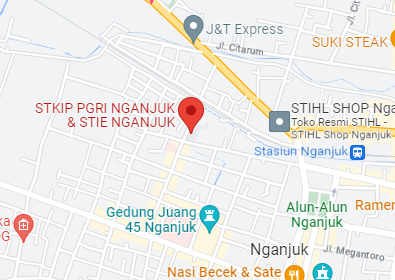Pengaruh Human Capital, Struktural Capital, dan Relasional Capital Terhadap Pengungkapan Inovasi Disruptif
DOI:
https://doi.org/10.59330/jmd.v2i2.52Kata Kunci:
Human Capital, Struktural Capital, Relasional Capital, Pengungkapan Inovasi DistruptifAbstrak
Latar Belakang: Inovasi disruptif telah menjadi fokus utama dalam strategi bisnis modern karena kemampuannya untuk merombak industri dan menciptakan peluang pasar baru. Pengungkapan inovasi disruotif adalah pengungkapan sukarela yang dilakukan suatu perusahaan untuk memberikan informasi-inforsi terkait perusahaan kepada stakeholder.
Tujuan: Penelitian ini bertujuan untuk menguji pengaruh human capital, struktural capital, dan relasional capital terhadap pengungkapan inovasi disruptif.
Metode Penelitian: Populasi dalam penelitian ini ada 33 perusahaan, 132 sampel, pengambilan sampel menggunakan metode purposive sampling, dan penelitian ini menggunakan paradigma kuantitatif.
Hasil Penelitian: Hasil dari penelitian ini adalah human capital, struktural capital, dan relational capital tidak berpengaruh terhadap pengungkapan inovasi disruptif.
Keaslian/Kebaruan Penelitian: Penelitian ini menjelaskan lebih rinci pengaruh relasional capital terhadap pengungkapan inovasi distruptif.
Referensi
Abdirahman, M. D., & Tarique, R. (2020). Impact of structural capital and innovation capability on firm performance,(Case study of Pharma industry in Karachi-Pakistan). The Strategic Journal of Business & Change Management, 7(1), 736-748.
Adiota, P. V., & Irwansyah, M. R. (2024). Pengungkapan Inovasi Disruptif Pada Perusahaan Sektor Hotel, Restoran dan Pariwisata di Indonesia. Jurnal Tera Ilmu Akuntansi, 25(1), 31–37. https://doi.org/10.21776/tema.25.1.31-37
Aziah, A., & Adawia, P. R. (2018a). Analisis Perkembangan Industri Transportasi Online di Era Inovasi Disruptif (Studi Kasus PT Gojek Indonesia). Cakrawala, 18(2), 149–156. https://doi.org/10.31294/jc.v18i2
Beltramino, N. S., García-Perez-de-Lema, D., & Valdez-Juárez, L. E. (2020). The Structural Capital, the Innovation and the Performance of the Industrial SMES. Journal of Intellectual Capital, 21(6), 913–945. https://doi.org/10.1108/JIC-01-2019-0020
Bontis, N. (1998). Intellectual Capital: an Exploratory Study That Develops Measures and Models. Management Decision, 36(2), 63–76. https://doi.org/10.1108/00251749810204142
Breznik, L., & Hisrich, R. D. (2014). Dynamic Capabilities Vs. Innovation Capability: Are They Related? Journal of Small Business and Enterprise Development, 21(3), 368–384. https://doi.org/10.1108/JSBED-02-2014-0018
Buenechea-Elberdin, M., Kianto, A., & Sáenz, J. (2018). Intellectual Capital Drivers of Product and Managerial Innovation in High-Tech and Low-tech Firms. R and D Management, 48(3), 290–307. https://doi.org/10.1111/radm.12271
Chen, J., Zhu, Z., & Xie, H. Y. (2004). Measuring Intellectual Capital: A New Model and Empirical Study. Journal of Intellectual Capital, 5(1), 195–212. https://doi.org/10.1108/14691930410513003
Chen, M. (2019). Pengaruh Ukuran Perusahaan Terhadap Intellectual Capital Disclosure Pada Perusahaan Manufaktur Yang Terdaftar di Bursa Efek Indonesia. Jurnal Keuangan Dan Bisnis, 17(2), 38. https://doi.org/10.32524/jkb.v17i2.580
Cinar, O., Altuntas, S., & Alan, M. A. (2020). Technology Transfer and its Impact on Innovation and Firm Performance: Empirical Evidence from Turkish Export Companies. Kybernetes, 50(7), 2179–2207. https://doi.org/10.1108/K-12-2019-0828
Dasuki, R. E. (2021). Manajemen Strategi: Kajian Teori Resource Based View. Coopetition: Jurnal Ilmiah Manajemen, 13, 447–453. https://doi.org/10.32670/coopetition.v12i3.710
Dyer, J. H., & Singh, H. (1998). The relational view: Cooperative strategy and sources of interorganizational competitive advantage. Academy of management review, 23(4), 660-679. https://doi.org/10.2307/259056
Gallié, E. P., & Legros, D. (2019). Firms’ Human Capital, R&D and Innovation: A study on French Firms. Empirical Economics, 43(2), 581–596. https://doi.org/10.1007/s00181-011-0506-8
Ghozali, I. (2020). Grand Theory 25. Semarang, Badan Penerbit Universitas diponegoro.
Jiménez-Jiménez, D., & Sanz-Valle, R. (2011). Innovation, Organizational Learning, and Performance. Journal of Business Research, 64(4), 408–417. https://doi.org/10.1016/j.jbusres.2010.09.010
Kim, C., Zhan, W., & Krishna Erramilli, M. (2011). Resources and Performance of International Joint Ventures: The Moderating Role of Absorptive Capacity. Journal of Asia Business Studies, 5(2), 145–160. https://doi.org/10.1108/15587891111152311.
Lin, N. (2019). Social Capital: A Theory of Social Structure and Action (2nd ed.). Cambridge University Press.
Ma, L., Zhai, X., Zhong, W., & Zhang, Z. X. (2019). Deploying Human Capital for Innovation: A Study of Multi-country Manufacturing Firms. International Journal of Production Economics, 208, 241–253. https://doi.org/10.1016/j.ijpe.2018.12.001
Molina-Morales, F. X., & Martinez-Fernandez, M. T. (2018). Social Networks: Effects of Social Capital on Firm Innovation. Journal of Small Business Management, 48(2), 258–279. https://doi.org/10.1111/j.1540-627X.2010.00294.x
Mulyono, F. (2013). Firm capability dalam teori resource-based view. Jurnal administrasi bisnis, 9(2), 128-143.
Nahapiet, J., & Ghoshal, S. (1998). Social capital, intellectual capital, and the organizational advantage. Academy of management review, 23(2), 242-266. https://doi.org/10.5465/amr.1998.533225
Nimtrakoon, S. (2015). The Relationship Between Intellectual Capital, Firms’ Market Value and Financial Performance: Empirical Evidence From the ASEAN. Journal of Intellectual Capital, 16(3), 587–618. https://doi.org/10.1108/JIC-09-2014-0104
Nurastuti, P., Rahman, A. S., & Wiryawan, T. W. (2023). Pengaruh Intellectual Capital terhadap Financial Technology di Era New Normal di Indonesia. Ikraith-Ekonomika, 6, 66–74.
Sabina, & Handajani, L. (2024). Pengungkapan Inovasi Disruptif Sektor Perbankan Indonesia. Costing: Journal of Economic, Bussines and Accounting, 7, 537–557. https://doi.org/10.31539/costing.v7i5.11426
Sardo, F., & Serrasqueiro, Z. (2017). A European Empirical Study of the Relationship Between Firms’ Intellectual Capital, Financial Performance and Market Value. Journal of Intellectual Capital, 18(4), 771–788. https://doi.org/10.1108/JIC-10-2016-0105
Singh, S. K., Mazzucchelli, A., Vessal, S. R., & Solidoro, A. (2021). Knowledge-based HRM Practices and Innovation Performance: Role of Social Capital and Knowledge Sharing. Journal of International Management, 27(1). https://doi.org/10.1016/j.intman.2021.100830
Subramaniam, M., & Youndt, M. A. (2005). The Influence Of Intellectual Capital On The Types Of Innovative Capabilities. https://doi.org/10.5465/amj.2005.17407911
Sukma, A. (2017). Perspektif the resource based view (RBV) dalam membangun competitive advantage. Ad-Deenar: Jurnal Ekonomi Dan Bisnis Islam, 1(01), 75-89. https://doi.org/10.30868/ad.v1i01.229
Supheni, I., Suhardjanto, D., & Probohudono, A. N. (2021). Pengungkapan Inovasi Disruptif Industri Pebankan Indonesia. EKUITAS (Jurnal Ekonomi Dan Keuangan), 5(3). https://doi.org/10.24034/j25485024.y2021.v5.i3.4997
Taylor, D. W., Jones, O., & Boles, K. (2020). Building Social Capital Through Action Learning: An Insight into the Entrepreneur. Education + Training, 46(5), 226–235. https://doi.org/10.1108/00400910410549805
Thomond, P., & Lettice, F. (2002). Disruptive Innovation Explored. 9th IPSE International Conference on Concurrent Engineering: Research and Applications.
Ulum, I., Ghozali, I., & Purwanto, A. (2014). Intellectual Capital Performance of Indonesian Banking Sector: A Modified VAIC (M-VAIC) Perspective. Asian Journal of Finance & Accounting, 6(2), 103. https://doi.org/10.5296/ajfa.v6i2.5246
Uzzi, B. (2018). Social structure and competition in interfirm networks: The paradox of embeddedness. In The sociology of economic life, 213-241. Routledge.
Wahyuningtias, E., Prima Sari, P., & Kusumawardhani, R. (2023). Pengaruh Modal Intelektual terhadap Kinerja Keuangan: Studi Kasus pada Perbankan di Indonesia Tahun 2015-2022. Indonesian Journal of Economics 2(2).
Wang, Z., Cai, S., Liang, H., Wang, N., & Xiang, E. (2021). Intellectual capital and firm performance: the mediating role of innovation speed and quality. International Journal of Human Resource Management, 32(6), 1222–1250. https://doi.org/10.1080/09585192.2018.1511611








